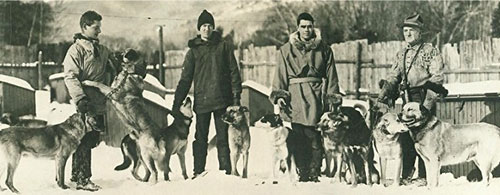

 | |||||||||
|
|
Journals 2008/2009Megan O'Neill
May 2, 2009 Today I mostly helped Jody and Bruce with the dissection of the gunnari. They collected brain, kidney, retinal, ventricle, gill and pectoral tissue. This species is a white-blooded species that was so interesting to see dissected with the clear and white internal organs. Because they lack hemoglobin and myoglobin, the slight coloration in the heart tissue is due to mitochondrial density. Jody’s master’s study was on retinal structure of these fish, so she has become proficient in retrieving the retinal tissue. After extracting the tissue, the tissue is weighed, and then put into tubes and flash frozen in dry ice. Some of these tissue samples will be spun down in the centrifuge to retrieve the mitochondria here in the lab and some will be taken back to the scientists’ respective schools to be studied at a later date. Because there are so many interesting people that I am working with, I want to start with highlighting their stories. While we are on the ship going to Dallmann Bay to go fishing last week, I found out this incredible tidbit about Dr. Crockett. As we were standing on the bow of this ship in the blowing, freezing wind, taking pictures of the icebergs in the Neumayer Channel, I made the comment of “can you imagine the original explorers coming down in the wooden ships?” and she replied, “My dad was one of those explorers” in a very nonchalant manner. I was floored! She explained to me that her father, Freddie Crockett, was attending Harvard University when he and two other buddies read the advertisement about Robert E. Byrd’s Expedition planned to Antarctica. They all decided they wanted to join and Freddie Crockett went to Byrd’s doorstep in Boston, knocked on the door and asked Mr. Byrd to be allowed on the expedition. Mr. Byrd’s response was a laughing, “No” and Freddie said that he would not leave his doorstep until he agreed. Finally Mr. Byrd gave in and made him a deal. If he would go and learn how to run dog teams and work a radio, he could join them. So, Freddie moved to Vermont and did both of those things! Freddie and his two buddies were referred to as the “Three Musketeers.” The expedition lasted two years and was an amazing accomplishment. Freddie Crockett rode aboard the ship, City of New York, which was 170 feet long made of oak and spruce. The second ship with the expedition was the Eleanor Bolling and was the first metal-hulled boat to be used to explore to Antarctica. They landed in the Bay of Whales and set up camp and named it, “Little America” on the East Side of the Ross Ice Shelf. From Little America, Freddie wintered over and spent the following summer exploring the Queen Maud Mountain Range under Laurence Gould’s direction. Their mission was geologic exploration and to radio back weather reports for Byrd’s flight from Little America across the South Pole and back. After the expedition, all members of the team got a land feature named after them. Crockett Mount, described in the book, Geographic Names of the Antarctic, 2nd Edition 1995, as located at “86°01’S, 155°04’W and “a prominent peak, 3,470m, standing 2 mi E of Mount Astor in Hays Mountains of the Queen Maud Mountains. Discovered by members of the geological party under Laurence Gould during the ByrdAE, 1928-1930, and named by Byrd for Frederick E. Crockett, a member of that party.” If that was not interesting enough for a lifetime, Freddie, went on in the 1930’s to lead an expedition to New Guinea in a 62 foot schooner from Philadelphia. Then during World War II, he built runways in Greenland. Just incredible! Needless to say, this inspired Lisa’s interest in working in Antarctica. She got her first job in 1980 working at McMurdo Station, spent two austral summers working, then began helping Dr. Art DeVries (he discovered the glycoprotein antifreeze in Antarctic icefish) studying icefish. This catapulted her into her undergraduate work at the University of Maryland and then her graduate and doctoral work on icefish with Dr. Bruce Sidell at the University of Maine. Currently she is an associate professor of physiology at Ohio University. For some interesting pictures of her father and additional details of her current trip being posted by her two sons, Liam (11) and Freddie (8), visit her weblog at www.lisainantarctica.wordpress.com.
|
||||||||
